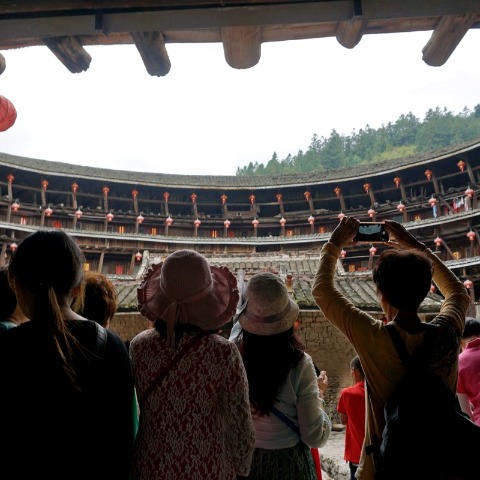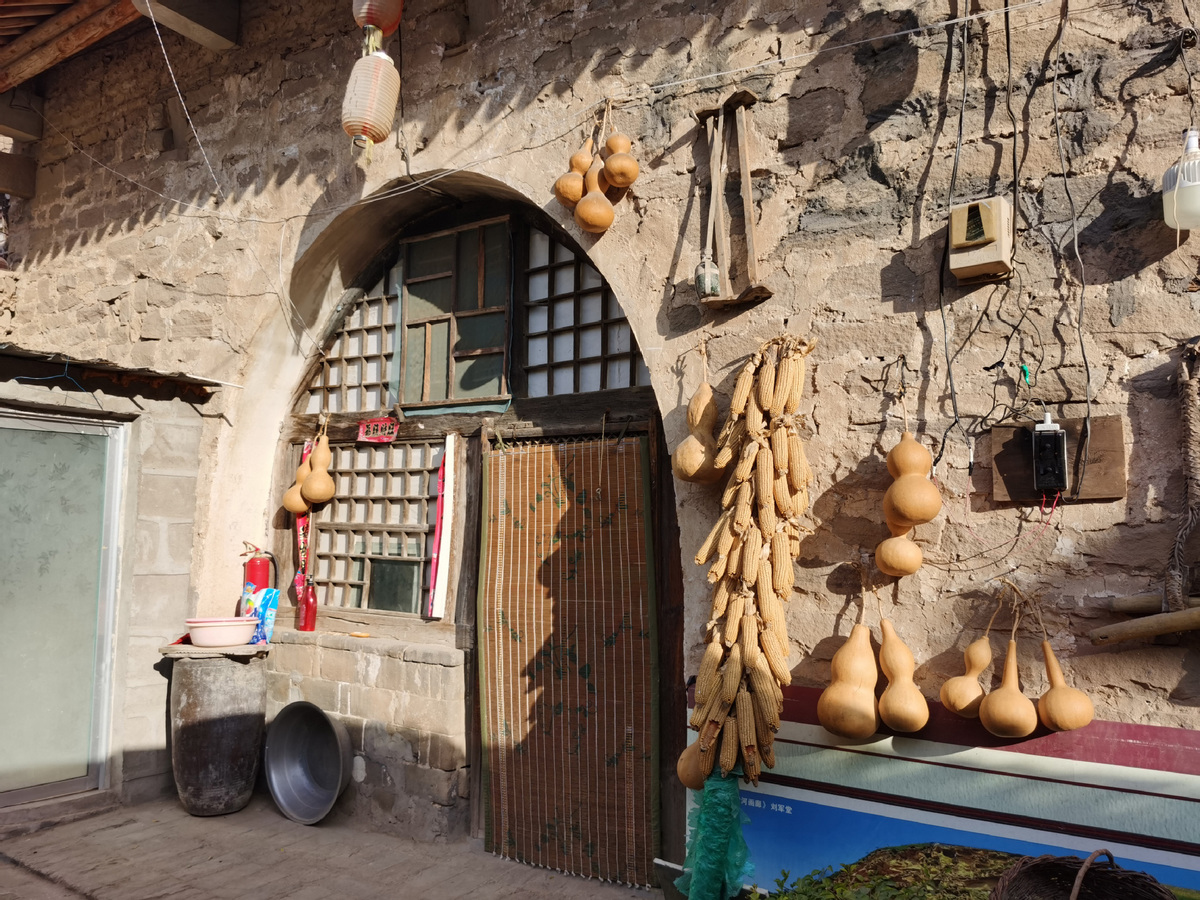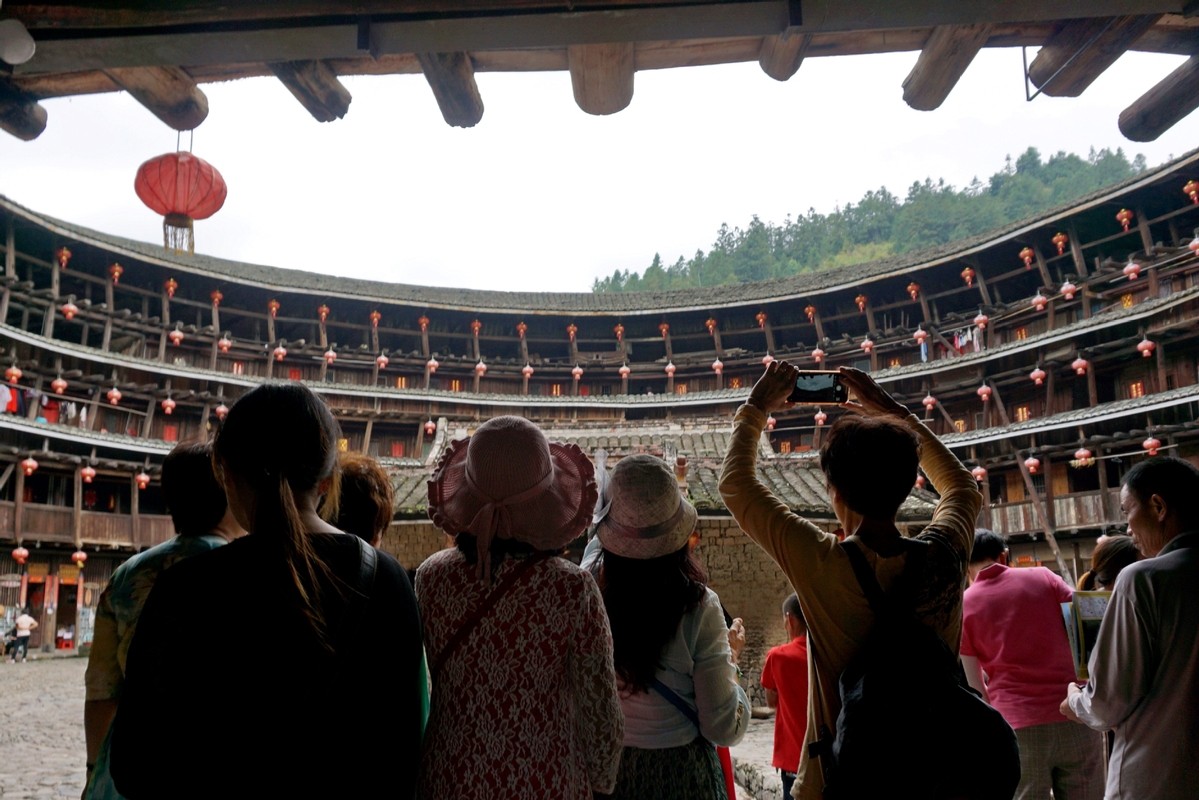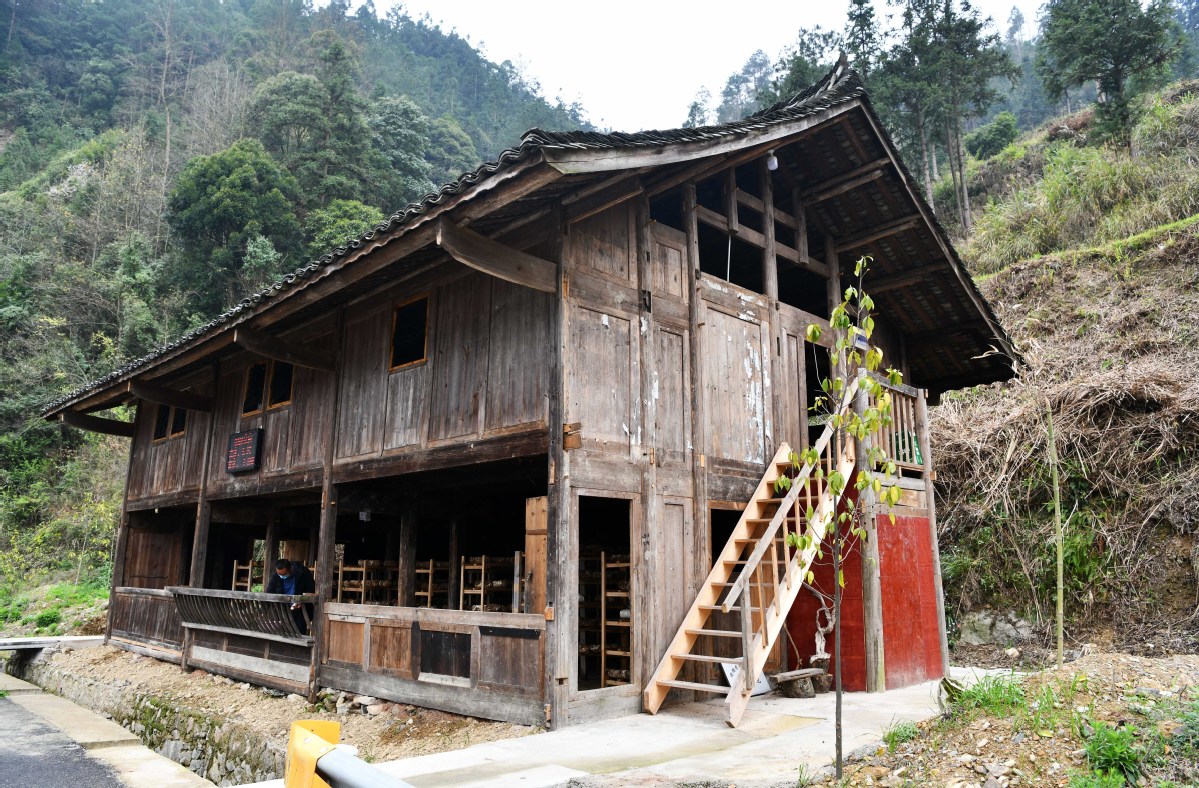
From cave dwellings to “boat houses,” Chinese have always found unique and practical ways to shelter themselves. Here, we present five types of traditional dwellings associated with different regions and ethnic groups in China:
Cave dwelling (窑洞,yáo dòng)

Yaodong, or cave dwellings, are the ancient form of residence of people living on the Loess Plateau(黄土高原,huáng tǔ gāo yuán) in northwestern China. The first yaodong dates back to China’s Bronze Age(青铜器时代,qīng tóng qì shí dài), though scholars generally believe that they became popular during the Han dynasty (206 BC — AD 220). Yaodong were dug into the soft loess soil, sometimes in tiers going up the cliffsides(悬崖,xuán yá), or sunken into the earth on flat ground. The design provided insulation(隔绝,gé jué) from extreme heat and cold.
Earth buildings of Hakka (土楼,tǔ lóu)

Tulou, or earth buildings of Hakka, are traditional dwellings of the Hakka (客家,kè jiā) ethnic group typically found in Fujian province. Large, circular, and often surrounded(环绕,huán rào) by mountains or rivers, tulou were designed to protect the residents from attack(抵御袭击,dǐ yù xí jī). The outer walls(外墙,wài qiáng) could be up to a meter thick(厚,hòu) and five stories tall(高,gāo), and were built using soil, lime(石灰,shí huī), sand(沙子,shā zi), and even sticky rice(糯米,nuò mǐ). The buildings originated around the 12th century, but became most popular during the Ming and Qing period. Hakka families in Fujian still live in tulou today, which tourists can visit.
Stilt House (吊脚楼,diào jiǎo lóu)

These raised houses, or diaojiaolou, are traditional dwellings for many ethnic minorities(少数民族,shǎo shù mín zú) in China’s southwestern regions, including the Miao, Zhuang, Buyi, Dong, Shui, Maonan, and Tujia. In mountainous areas(山区,shān qū) with little room for construction, the design allowed homes to be built over rivers or on uneven(不平坦的,bù píng tǎn de) hillsides(山坡,shān pō). The part under the stilts is usually used for storing food, while the family lived in the house above. Diaiojiaolou can be found in Sichuan, Guangxi, Hunan, Hubei, and Guizhou.
Tibetan blockhouse (碉房,diāo fáng)
The diaofang is a common Tibetan dwelling made of stone, clay bricks, and wood. They are found around the Qinghai-Tibet Plateau(青藏高原,qīng zàng gāo yuán) and parts of Inner Mongolia. They consist of a flat roof, and normally two or three floors(层,céng). According to the Book of the Later Han(《后汉书》), compiled in the fifth century, these buildings have existed since as early as the year 105. Although most diaofang have stone walls, some are built with clay bricks on the inside and stone on the outside which, along with deep and narrow windows(窗户,chuāng hu), provide better insulation during harsh winters(寒冬,hán dōng) on the world’s tallest plateau.
Boat house (船屋,chuán wū)

These houses, which resemble an upside-down(倒立,dào lì) boat, are traditional dwellings of the Li people of Hainan. They likely originated from real boats(船,chuán) used by the ancestors of the Li people, who converted them into hurricane-proof(防飓风,fáng jù fēng) dwellings when they settled in(定居,dìng jū) Hainan. Today, boat houses are made of wild grass, rattan, mud, and other natural materials. So impressive are these structures that the construction techniques of the Li people have been listed as National Intangible Cultural Heritage since 2008.
Source: The World of Chinese
If you have any problems with this article, please contact us at app@chinadaily.com.cn and we'll immediately get back to you.